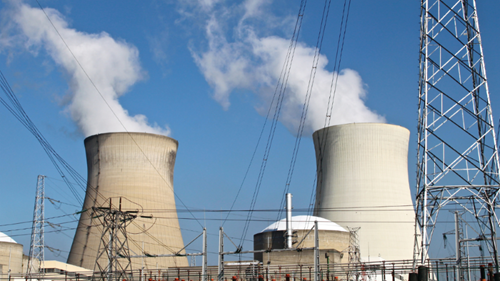Why are unproven climate solutions proving so popular?
Read time: 3 minutes

Read time: 3 minutes

The UK is funnelling billions into nuclear and carbon capture technologies that are still unproven, so what do they have that cheaper, established climate solutions do not, and what can we learn from this?
Over the last few months there has been a clear shift in emphasis towards big ticket technologies like nuclear power and Carbon Capture, Usage and Storage (CCUS) in the UK’s approach to net zero. In fact, these two solutions are mentioned 108 times in the government’s Net Zero Growth Plan – more than wind, solar, heat pumps and electric vehicles combined.
On nuclear, the government wants the UK to become a world leader in cheaper, faster-to-construct mini nuclear power plants called Small Modular Reactors (SMRs). On carbon capture, it has earmarked £20 billion for supporting early deployment of CCUS in heavy industry – up from £1 billion just two years ago.
There’s nothing necessarily wrong with these decisions. Whatever your views about nuclear, it generated 15 per cent of the UK’s electricity last year and has the potential to play a huge role in the transition to net zero. And even in the most radical scenarios, fossil fuels will continue to play a role in industry for some years to come, so we need to find ways to stop the carbon we emit from ending up in the atmosphere.
But here’s the problem. Both SMR and carbon capture technology are still unproven at scale. Large-scale CCUS projects around the world have so far flattered to deceive, and there are no SMRs yet in commercial operation anywhere in the world.
This begs the question, are the billions being invested in these emerging technologies taking away much-needed funding from cheaper, existing solutions that we know would have an immediate impact?
For example, the UK could offset many more times the output of its biggest current nuclear project, Hinkley Point C, by investing in already-proven energy efficiency measures, and save billions in the process. So why is the national drive for energy efficiency not as strong as the drive for nuclear?
This is what many experts are worried about. In its recent review of the UK’s progress towards net zero, the government’s own climate watchdog warned ministers against continuing to place their reliance on “technological solutions that have not been deployed at scale” rather than “more straightforward encouragement of people to reduce high-carbon activities”.
One of the reasons this is happening is the ‘hassle factor’. The straightforward solutions we have at our disposal – things like wind and solar power, heat pumps and building insulation – are effective and affordable. But in one way or another, they all require changes to business as usual.
To successfully retrofit buildings, we need to intervene in people’s lives and people need to adapt to a new way of doing things. To build a power grid dominated by wind and solar, we need to completely overhaul how our electricity system works and energy consumers need to play an active role in that process.
In comparison, modular nuclear power and carbon capture will be incredibly expensive and we have no proof of how effective they may be, but they do not significantly impact business as usual. They are passive solutions; life can largely go on as before.
When you look closely at the government’s recent backtracking on green policies, fears about the hassle factor have clearly played a role in those decisions.
So what can the green economy learn from this? The path of least resistance to net zero is not just about finding the cheapest, most adaptable or most efficient solutions. It’s also about how disruptive those solutions are.
Providers of low carbon goods and services need to show that their solutions are not just affordable and effective, but come with minimum hassle. That’s how we win the argument for net zero.
Read our series of blogs to help you reduce energy in your business.
Share